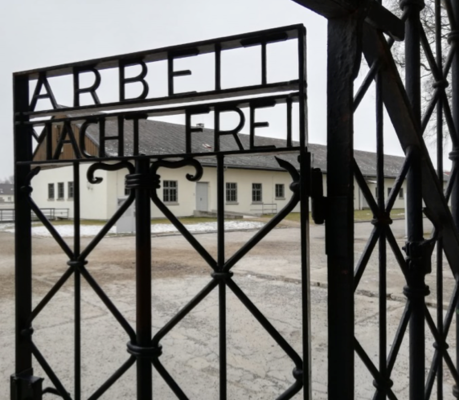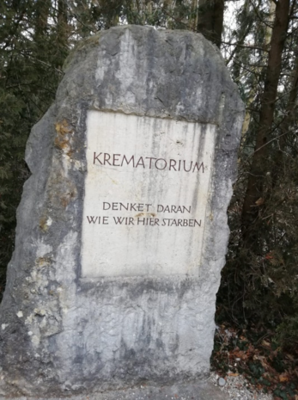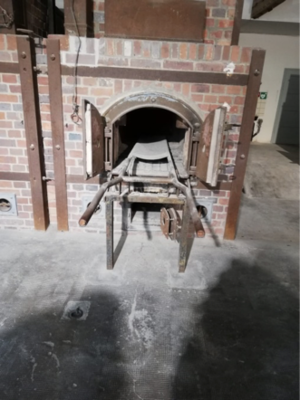Anne-Marie Jettenberger has written the first article about the class's visit to the concetration camp in Dachau near Munich, but there are more below:
Dachau frz. Artikel.docx
L`excursion à Dachau
Le 23 janvier, 2019, les élèves de la 9e A et B sont allées à Dachau au camp de concentration. C´était une expérience très triste et intéressante. Nous y sommes allées pour 2,5 heures et nous avons visité par exemple le crématorium, le musée et des casernes. Nous avons regardé aussi un film sur le camp de concentration. Le film était très choquant. Nous avons visité la chambre à gaz où les gens de SS ont tué des détenus du camp de concentration. Finalement, l´éxcursion était pourtant très instructive.

On Wednesday, January 23rd, we were in the concentration camp in Dachau. When we got there, the group was split up and we had a 2.5 hour guided tour.
First we were given some general information about this memorial. This concentration camp, also known as a labour camp, existed from March 22nd 1933 until its liberation by US army soldiers on April 29th 1945. Mostly men were brought to this camp, and out of the 200,000 prisoners only 8,000 were women. In these 12 years when this camp was in operation, 41,500 people died, most were willingly tortured and killed.
In general, concentration camps were used to keep people who were Jews, were disabled or were political opponents of the National Socialism. Heinrich Himmler, in 1933 "Reichsführer SS" and Munich's police chief, had the concentration camp built east of the city of Dachau, on a site of a former multifunctional factory. The huge area was surrounded by a wall and the inmates were completely cut off from the outside world.
Everyone who found for example a newspaper had to give it to the soldiers immediately or was severely punished if he was caught. There was for example a man who had made an attack on Hitler. He had hidden a couple of bombs every day during his work, which he hd put into Hitler’s lectern at night.
In the end, the concentration camp was so crowded that in the barracks where there was only room for 52 people, 200 people had to live. At last there were 35 barracks.
Lisa Marie Direske

Concentration camp Dachau
We took the bus to Dachau. We drove about 1.5 hours, it is a long way. When we were there, we had half an hour to eat something and go to the toilet. Then our guide started walking to the entrance of the concentration camp. It looked very frightening. At the door you could read "Working makes free". We went through the door on a big field which was surrounded by a big wall. In the rooms, which were not reconstructed, there was an exhibition. It was very interesting to know what the soldiers did with the people in that camp, but it was horrible to think about it.
We were in the barracks that is the place where the prisoners slept. One of the barracks was very narrow and maybe three people had to sleep in those "beds". When we were there it was very cold and it was windy, we could feel that it was not nice for prisoners to live there for more than one year.
Our guide showed us the room where many people were killed by using gas. I did not try to put myself into that situation because it was too horrible. After that guided tour we had two hours to go around again and then we drove home.
Lina Baumberger

On January 23rd I went with my class to Dachau to the former concentration camp. I wasn't really excited because I already knew a lot about that. But it was a bit scary to see all those things in real life.
So at 8:30 we went by bus to Dachau. It was very cold outside, I think -6 degrees or something like that.
First we had to wait for our guide ... she was really nice and the tour through the concetration camp wasn't boring with her. We learned a lot of things and sometimes we were really shocked by things she told us. But she said that she would not tell us the most terrible things.
First she gave us general information about that time and the building, then we went inside. It's all really huge and scary because 41,500 people died there. So we went in the museum and saw some pictures about many corpses and the poor prisoners. The most terrible thing we saw there was in my opinion the pictures, the bunkers and the ovens where the corpses were burnt.
All in all, it was an interesting excursion and it is good to see it once.
Christina Benedetti